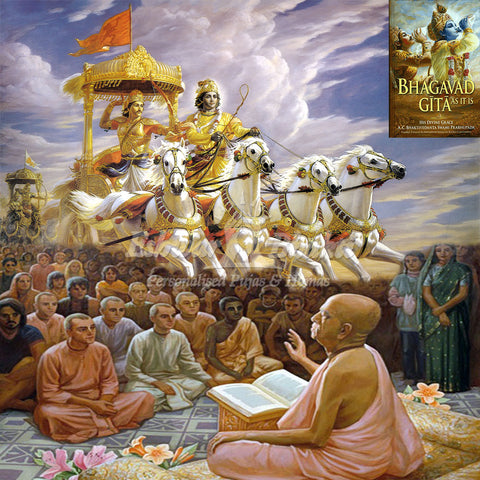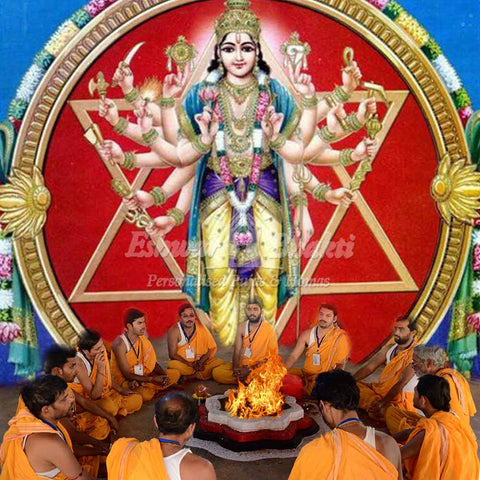Govardhan Puja
Govardhan Puja is an auspicious festival in the Hindu culture that occurs a day after Diwali to commemorate the Baal Roop (child form) of Lord Shri Krishna. Govardhan Puja is also known as Annakut or Annakoot (meaning a “mountain of food”), in which devotees’ worship Govardhan Parvat (a hill) and offer 56 varieties (Chappan Bhog) of vegetarian food and sweets as a mark of gratitude.
The word Govardhan is derived from the Govardhan mountain located in Gokul (Uttar Pradesh), which was single-handedly lifted by Lord Krishna. Govardhan puja started from Brijbhoomi as a thanksgiving ceremony to the most lovable God Krishna and gradually became prevalent throughout India. According to the Hindu calendar, people of India celebrate this holy festival on the first day of Shukla Paksha in the Kartik month.

How is Govardhan Puja Celebrated?: Devotees celebrate this auspicious ritual Govardhan Puja or Annakut Puja with utmost devotion. The birthplace of Lord Krishna known as Brijbhoomi celebrates this festival with a grand ceremony. The idols of Lord Krishna and Goddess Radha are given milk bath and dressed in new clothes and ornaments in the temples of Mathura and Vrindavan.
• The puja starts with devotees making heaps of cow dung in the form of a hill which represents a symbol of mount Govardhan and decorates it with different colors and flowers.
• Then, devotees perform 'Parikrama' (moving around the mountain) around the cow dung hillocks while doing Kirtans (a combination of music, dance, and devotional hymns).
• They offer prayers and aarti to the Govardhan parvat (mountain) for the protection and happiness of their family.
• The temples of Lord Krishna all across the country celebrate this festival by reciting bhajans, Kirtans and by offering different foods, sweets, and flowers to the deities and distributing the prasad among all devotees.
• As per the tradition, devotees prepare and offer ‘Chappan Bhog' (56 different food items made up of delicacies, sweets, or savouries) to the Govardhan mountain as a respect towards Mother Nature.
The festival of Govardhan puja is associated with several other rituals and traditions. People living in different parts of India, celebrate this holy day while worshipping Lord Indra, the God of Rain, and Lord Vishwakarma, the divine architecture god for their blessings and support to live a comfortable life on earth.
Significance: Govardhan Puja is an auspicious festival that upholds the powerful bond of faith, devotion, and protection between Gods and devotees. The story behind Govardhan Puja educates every human to respect the forces of nature and to always remember that, being a mortal, we are dependent on Mother nature and must be grateful for all the blessings bestowed on us. The story of Lord Krishna, lifting the mountain and saving the lives of thousands of devotees describes that bhakti or devotion is the only way to connect with divinity.
Lord Krishna lifted and sheltered all living beings of Gokul village under the large mountain, Govardhan. So, the significance of Govardhan puja also rests on the belief of the devotees in their Lord and how the Lord will protect them against all odds and in every critical situation.
Govardhan Puja Story: As per Vishnu Puran, once Lord Krishna asked His mother Yashoda the reason behind worshipping God Indra. Mother Yashoda explained that people worship God Indra because He is responsible for rain on Earth. Young Krishna disagreed with His mother and asked the villagers to stop worshipping God Indra. He had requested them to worship the Govardhan mountain, for the reason that Mount Govardhan is the one that provides natural resources to the villagers for their livelihood. All villagers agreed with Krishna as He was respected by everyone due to His knowledge and immense power.
As a result, God Indra got furious by the act of the young boy Krishna and asked Varuna Deva (the god of rains) to pour continuous torrential rain for seven days. Due to the heavy downpour, the people of Gokul requested Lord Krishna to save their lives. The little God Krishna immediately asked the villagers to come near the Govardhan hill, where He uprooted and lifted the mountain on His little finger. Villagers, along with their cows and other animals, took shelter under the Govardhan mountain. After 7 days of continuous storms, Lord Indra accepted his defeat and stopped the storms as he realized that the young boy is an incarnation of Lord Vishnu. This day is therefore celebrated as a festival that pays respect to Mount Govardhan.
Since that event, Hindus started celebrating Govardhan Puja and Mount Govardhan becomes a major pilgrimage site for the devotees of Lord Krishna. On the day of Annakut, thousands of devotees offer a variety of food to the mountain after doing the 'Parikrama' of an eleven-mile path around the mountain and offering flowers and Diyas to the several shrines located in that region.
Summary: According to the Hindu calendar, Govardhan Puja falls in the month of October-November. Hindus celebrates this holy day on the very next day of the grand Diwali celebration. People worship Lord Krishna as well as the Govardhan Mountain as a symbol that reminds the victory of good over evil. People from different regions celebrate this day according to their age-old tradition. Govardhan Puja is grandly celebrated in Mathura and Gokul because it is the birth place of Lord Krishna and He had spent most of his childhood in this region. Bhagavat Purana describes a beautiful story that Lord Krishna lifted Govardhan Hill with His little finger for 7 days and nights to provide shelter to the villagers of Gokul from torrential rains.
Since this episode, Govardhan has turned into a pilgrimage and devotees’ worship and offer prayers and food to the mountain. Hindu devotees around the world come to worship Govardhan mountain, which is located near Mathura in Uttar Pradesh. On this auspicious day, devotees offer 56 kinds of sweet dishes to Lord Krishna which are collectively called “Chhappan Bhog”. Devotees worship Lord Krishna as well as ‘Govardhan Parvat’ with full devotion and they perform kirtans, aarti, bhajans, etc. Devotees with their utmost faith and love for Lord Krishna, offer prayer and seek his blessing for a life without hurdles.







Sri Krishna bhagwan 🙏🙏🙏